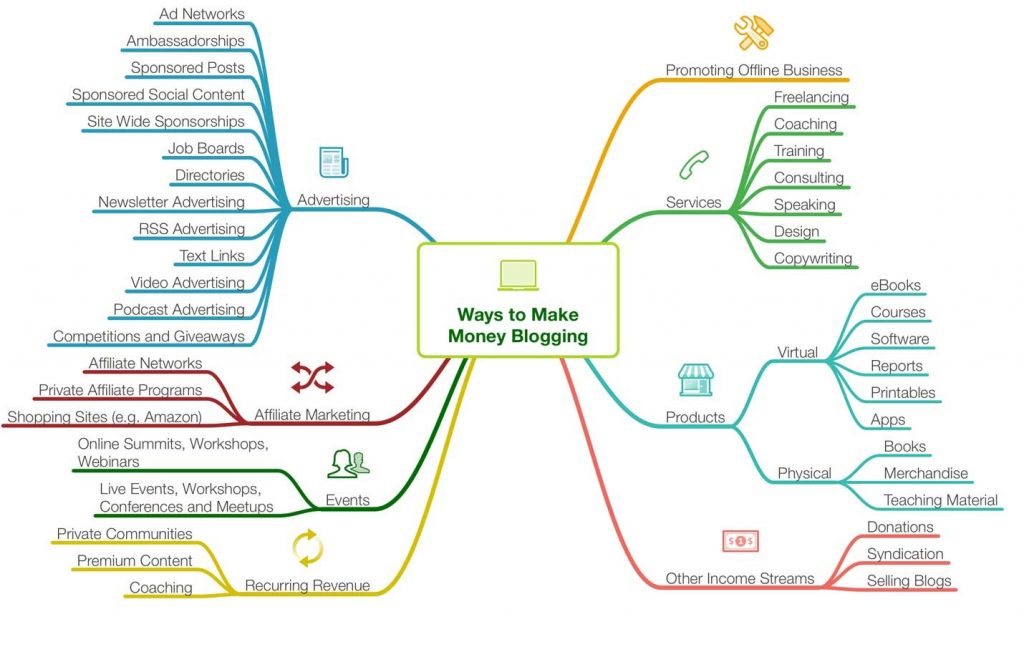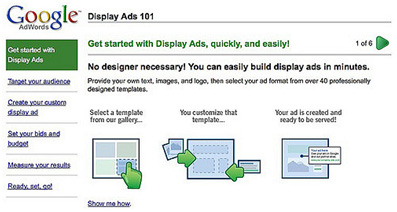This is the third part of a series of guides on how to succeed with blogging. This guide was written by the team at FastWebHost.com who have helped thousands of blogs setup and achieve success over the last 10 years.

In part 1 of this series we’ve covered how to build your blog, and how to create pages and posts. In part 2 we showed you how to grow your blog’s followers.
Today we’ll look at how to make money from your blog.
There are 5 general ways to make money from a blog:
- Sell something
- Show ads
- Make recommendations
- Have patreons
- Indirect income
First things first
The first and most important rule is of course to have a readership you can make money from. That’s why creating valuable content, and getting a regular following essential. All the ways of making money are pointless if you don’t have anyone to make it from.
Sell Something
There are 2 broad categories of something you can sell - physical products and digital products.
On the physical side, you could sell books, speaking events, or training/coaching programs. You could also use your blog to sell handmade goods, or manufactured private label merchandise. There are a number of services available online (such as Amazon FBA) that will help make selling easy. The downside is creating or sourcing these products will take a lot of time and money, and returns and shipping could be a hassle. In some cases you might need to maintain inventory.
If inventory troubles other you, you can look into digital products, such as ebooks, ecourses, a members area or paid subscription to your blog, and downloadables (such as audio or video clips). This puts you in full control of your product and pricing. You can also pivot quickly because there’s no question of inventory. Digital products have high profit margin - they might be expensive to develop, but they are not expensive to maintain and deliver to your customers. However, because you’re the one creating the product yourself, there will be some technical challenges and steep learning curve. Or you can outsource the creation to one or more freelancers, and incur some more expenses in the process.
You might also sell your services - your time and expertise. If you’ve got a good following then it’s clear that you’re a good writer or artist or designer, or videographer, or cook even. Why not rent out your time? There’s little to no inventory required, little to no startup costs, and you can be up and running within the hour. The trouble is, since you trade your time for money, you can only grow as big as your time allows. You’ll also face the occasional client who pays late (or doesn’t pay at all).
Show Ads
Others pay you to put their name, product or message in front of your audience. This can be simple banner ads on your blog, sponsored posts (where you mention that a post was sponsored by someone), or underwritten posts (where you introduce someone else who writes the post for your audience, promoting his products in the process).
Most of these are easy to setup and you maintain full control of the process. However, ad revenue is quite low. You’ll need a huge amount of traffic to get a decent income. For example, adsense, which is the biggest ad network there is, pays out an average of $1 per 1,000 ad impressions. Most people don’t like ads, so you’ll be losing a few to a lot of visitors, depending on how you choose to display ads. And finally different devices, browsers and ad blockers can interfere with ads displaying, which means you might end up making even less than the $1/1000 visitors.
Recommend Products
The technical term for this is affiliate marketing. You earn a commission every time your visitors buy a product or service you recommend. There are thousands of products and retailers to partner with, the most popular being Amazon Affiliates. You can earn passively from your posts as long as your visitors keep listening to your advice. You don’t have to worry about creating products, supporting customers, or any of the technical complexity of selling your own products or services.
Patreons
The final, direct way to make money from your blog is to accept donations. You produce all your content on your own time and publish them for free. If someone wants to help support you they do so through donations. It’s not begging. You’re essentially letting people pay whatever they want for your content, even if the amount is $0. There are 2 ways to do this - by having a donate paypal (or stripe) button on your website, or by signing up for Patreon.
In some cases this may be a bit like the subscription service we described above. Some bloggers may offer exclusive experiences or behind-the-scenes content to their backers to entice them to donate.
Indirect income
You don’t have to make income directly from your blog though. If you offer services, a blog is a good way to establish yourself as a thought leader. If you were already and author, it’s a good way to help people get a taste of your writing. While you may not make much, or any money from of your blog, you mind end up making more because of your blog.
Final Tips
So, to sum up, here are all the ways bloggers can make money:

Image courtesy of problogger
More and more blogs are being started everyday. Most of them are abandoned within the first few months because the owners can’t make any return. So what separates successful bloggers from the unsuccessful ones?
Successful bloggers:
- Diversify and rely on more than one source of revenue
- Are patient and know they might not see returns for months, but are flexible and know if they don’t see any measurable results quickly then they must do something differently
- Don’t see their blogs as the source of all their income, but rather as a home base from which they can springboard additional income producing endeavors
So there you have it. You now know how to make a blog, how to be successful with it, and how to earn a living from it. Congratulations. If you’re ready to start you should get your domain and hosting here: http://fastwebhost.com/

 Phone: 1(877) 215.8104
Phone: 1(877) 215.8104 Login
Login
 Seeing that keywords are crucial for demanding attention from customers, you will also need to learn the ways of Pay-Per click advertising (PPC). In this advertising model, you bid for keywords that you consider being relevant for your target market or segment of customers and having it placed on different websites to direct customers to your website.
Seeing that keywords are crucial for demanding attention from customers, you will also need to learn the ways of Pay-Per click advertising (PPC). In this advertising model, you bid for keywords that you consider being relevant for your target market or segment of customers and having it placed on different websites to direct customers to your website.